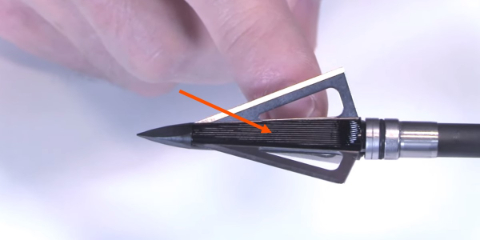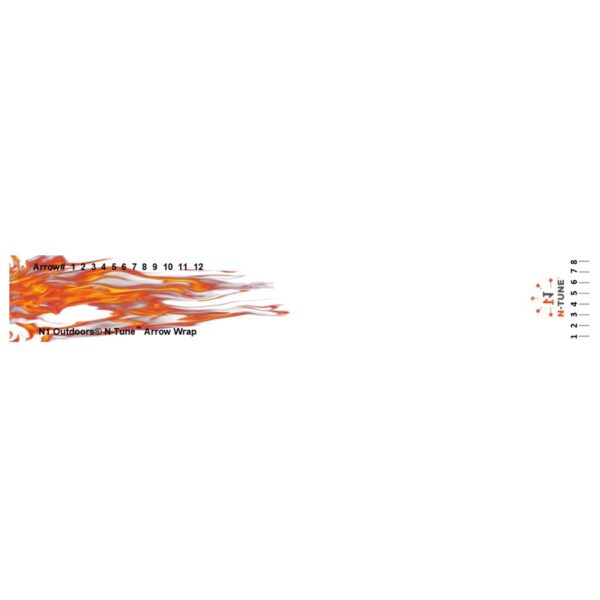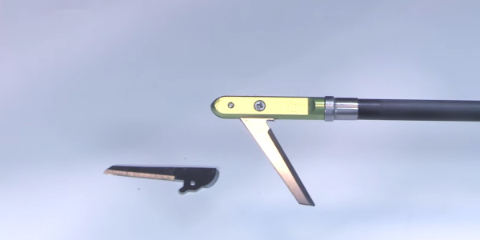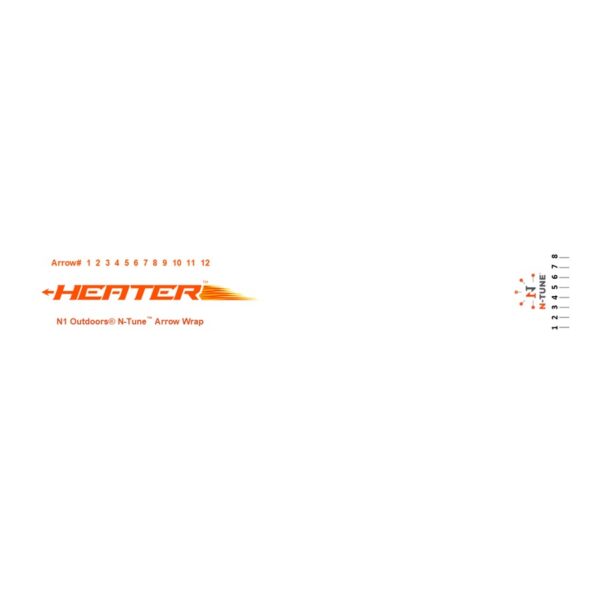In this review, I tested a classic broadhead… the NAP Thunderhead!
These heads have been around for a long time. I actually like testing these older broadheads like this one, just to see if the newer designs have passed them by or if they really are still holding their own.
For these tests, I used my Bowtech SR6 set at 72 pounds, 27” draw. I’m using Bishop FOC King Arrows for most of the shots, but then the Bishop FAD Eliminators for the really hard impact ones.
So, let’s go through some of the design features and specifications and then put them to the test!
The NAP Thunderhead At First Glance
Let’s zoom in and check out the Thunderhead and then put it to the test.

Here’s a good look at the 125-grain Thunderhead. It’s a petty cool, classic design. It has a cutting diameter of 1-3/16”. It has an overall length beyond the ferrule of 2”, so it’s pretty long by some of today’s fixed-blade standards, especially for 3-blade heads.

It has steel blades that are 0.027” thick, which are pretty thin by today’s market standards.

The tip is a hardened steel, chiseled tip that’s really pointy. I really like this chiseled tip. The ferrule is made out of aluminum.

Notice that the ferrule of the Thunderhead has micro-groove channels in it.
The micro grooves in the ferrule are supposed to aid in flight as it carries the air around with it and it rotates, which is supposed to aid in penetration. This is similar to what the dimples on a golf ball do.
-

N1 Outdoors® Sunrise In Tineville™ Tee
$18.99 Select options This product has multiple variants. The options may be chosen on the product page -

N1 Outdoors® Tine Lines™ Elk Antler Tee
Price range: $26.99 through $29.99 Select options This product has multiple variants. The options may be chosen on the product page -
Sale!

N1 Outdoors® N1 Moments™ Licking Branch Buck SS Tee
$5.00 Select options This product has multiple variants. The options may be chosen on the product page
More incredible archery t-shirt designs HERE!
Thunderhead Testing
So, I was really eager to put the Thunderhead to test and see how it would hold up, especially since it has been around so long and has such a loyal following. Let’s see how it did!
Flight Forgiveness Test

In the flight forgiveness test, I shot one filed point and then two broadheads into the target at 40 yards.
Initial Sharpness: 225

To test the “out-of-the-box” sharpness of the Thunderhead, I tested how much pressure it would take for the blade to cut through a metal wire (the lower the number, the sharper it is). It registered 225.
Penetration Test #1

I shot the Thunderhead into a block of ballistic gel that was fronted with a 2/3″ rubber mat and 1/2″ MDF. It penetrated 6-1/4″.
Edge Retention Test

After Penetration Test #1, the sharpness scale registered the Thunderhead’s sharpness at 325.
Penetration Test 2 (layered cardboard):

The NAP Thunderhead penetrated through 59 layers of cardboard.
Angled Shot Test (1/4” MDF/Carpet)

I shot the Thunderhead into angled MDF fronted with carpet.
Durability Test #1 (1/2” MDF max 3 shots)
I also shot the head into 1/2″ MDF (3 shots).
Durability Test #2 (Steel Plate)

In this durability test, I shot the Thunderhead into a .22 ga steel plate (max 2 shots) to see how it would hold up.Here’s the head after going through the steel plate two times.
The Thunderhead looked brand new after going through the MDF and the steel plate and it still held up really well. But, the blades got a bit nicked up (“edge chatter”).
And then you can see the hole. You can see how it looks like just a ferrule hole with 3 slits coming off of it.
Durability Test (Concrete)

I shot the Thunderhead into a concrete block to see how it would hold up. The tip embedded really deeply into the concrete and I couldn’t get it out. I didn’t want to mess up my concrete by digging it out. And, this one blade got stuck right in the end into the concrete as well.

Here’s the Thunderhead after being shot into the concrete. As you can see, the ferrule just broke off right there. The other two blades just stayed intact. They got a little bit nicked up there at the end but they still stayed in place.
And overall, after the concrete block test, it still spun decently, but it did just break in half. Now, that’s after going through the MDF 3 times and the steel plate twice. So overall, fairly impressive durability.
Final thoughts on the NAP Thunderhead
So what do you think of the Thunderhead?
When my buddy told me he was going to send me a pack of these, I was intrigued. I like to test every head. But, at the same time, I thought, “They are so old school. The newer stuff is going to be blowing it away.”
But, then when I started playing around with them and looking at them, I thought, “No, these are really well-made and well-constructed and designed.”
And the tests just proved just that. I can see why they have such a loyal following and why they’ve taken so many animals over the years.
Now, I will say that I think there are other 3-bladed heads on the market that do better than this one. But then again, this is better than a lot of them that are on the market as well.
So check out the score sheet in the description box and see how it performed in the areas that matter to you the most and see if it might be a good fit for you.



























































